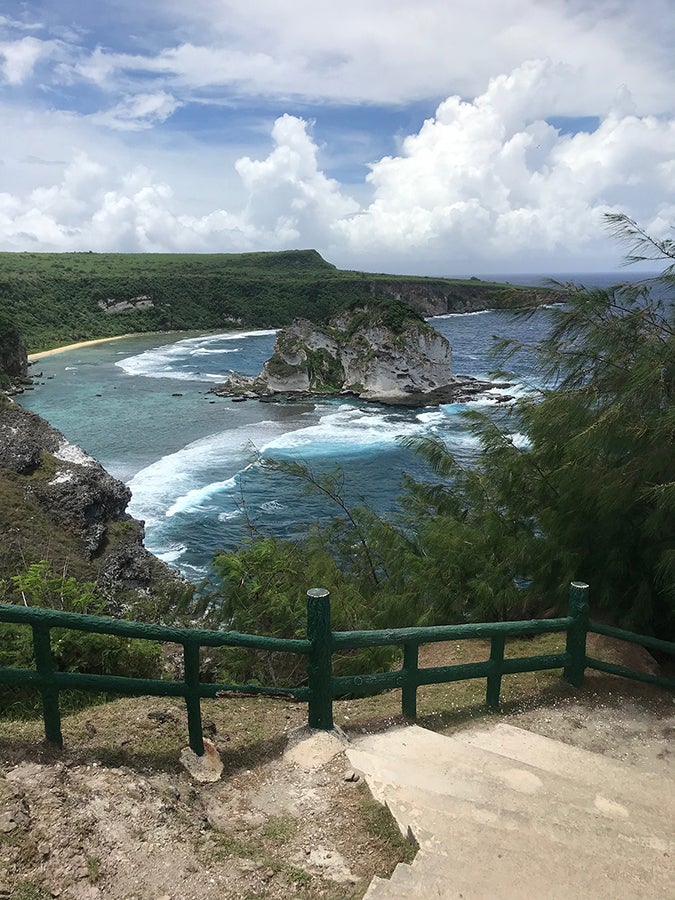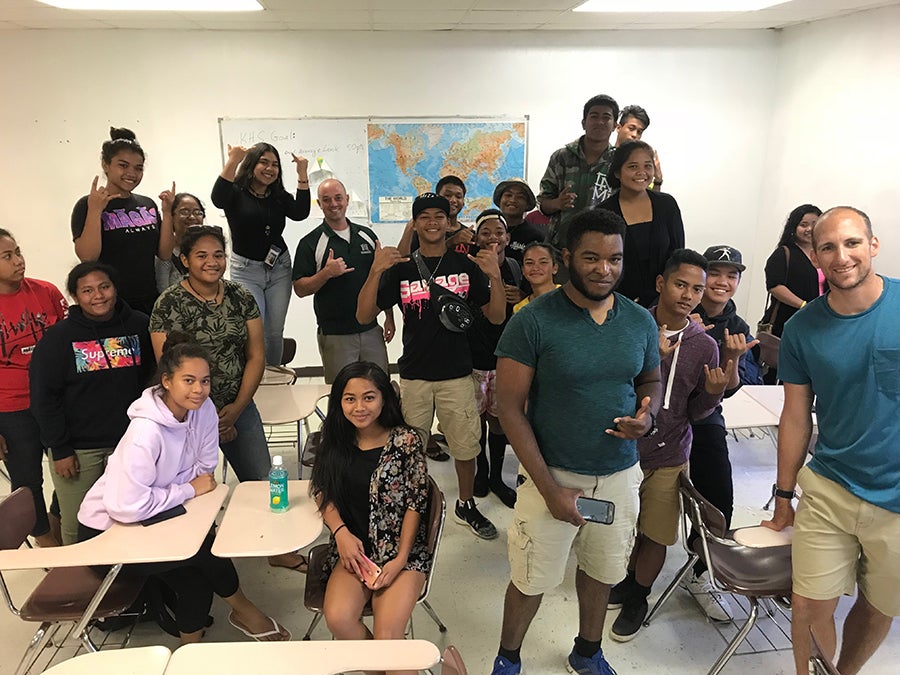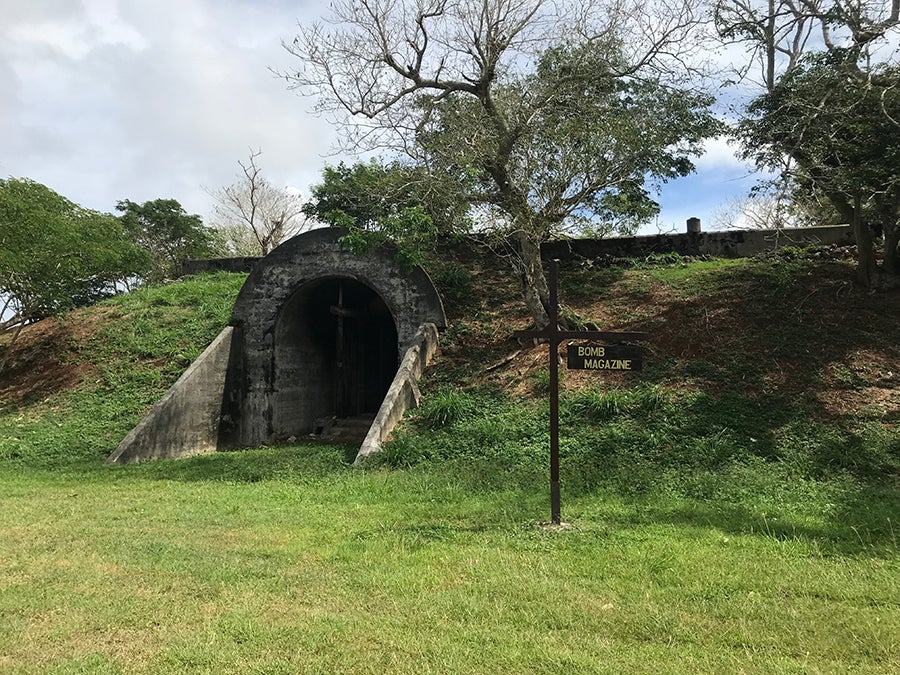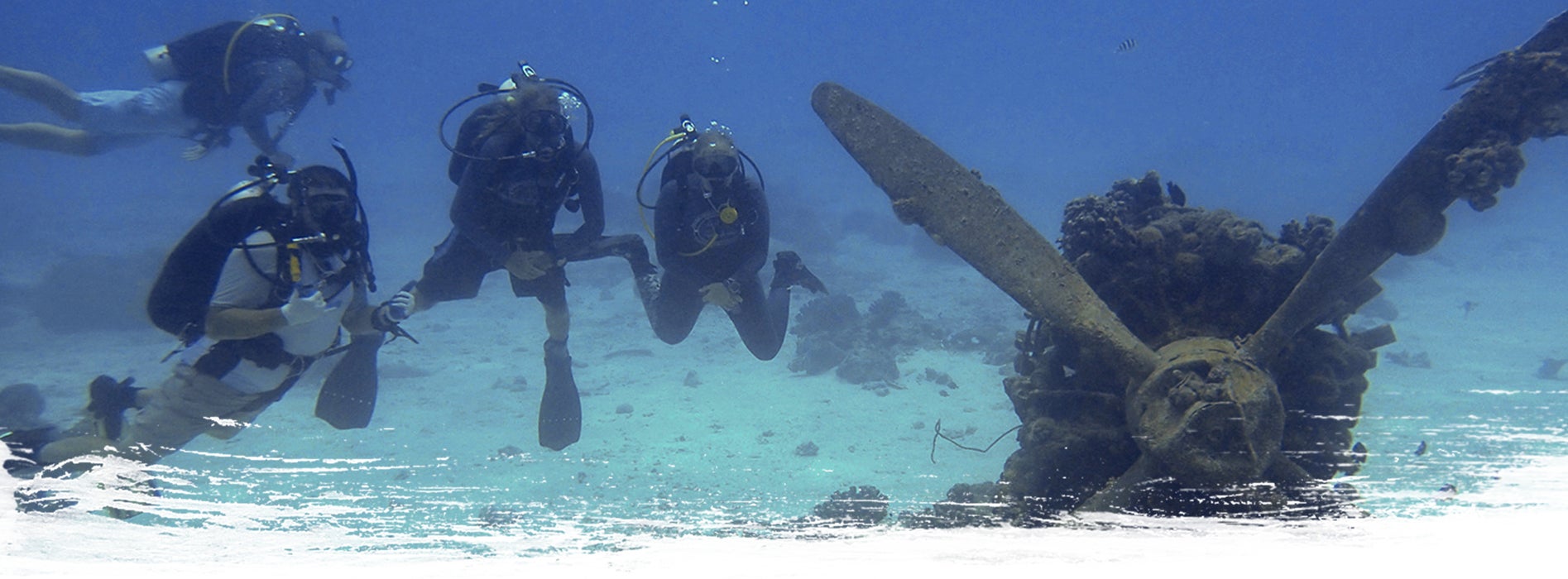LEAN, MEAN SURVEYING MACHINE
Maritime students go from surveying WWII sites underwater to local outreach
As we fly on top of the crystal blue waters in the zodiac boat, multiple thoughts run through my head: the plan for the day, my job during the dives and what types of materials we are looking for. Scanning the horizon, I imagine how 74 years ago it would be filled with the huge metal masses of United States Navy ships.
Our field school has been underway for the past few weeks and it’s been an amazing experience. For me, the best way to learn the techniques and methods of the archaeological process has been being in the field or, in our case, on the water. We’ve dived, snorkeled and have become a lean, mean surveying machine.
As the field school progresses, our knowledge and execution of archaeological methods such as six-person snorkel surveys, side scan sonar lines or two-person dive circle searches has improved. We were even able to help conduct surveys with a Remote Operated Vehicle (ROV) that was provided and driven by one of our partners.
We also conducted public outreach about our research and the overall mission.
Several maritime students appeared on radio shows, the local news and classmate Joel Cook and I talked to several classes at Kagman High School on the island. Our camaraderie has grown as well. On the boats, we talk, joke and grow closer as a group.
But while we have been working hard, we also have been taking time to explore Saipan and the massive amount of history here.

Bird Island (Contributed photos)
We have walked into a Japanese bomb bunker, machine gun emplacements, visited Banzai and Suicide Cliffs and looked at the ancient paintings at Kalabera Cave.
A special treat came on the final day of jumping targets when we finished early and were able to dive at some of the better-known sites on the WWII Maritime Heritage Trail: Battle of Saipan. We were able to explore downed aircraft and shipwrecks and marvel at the amount of preservation. It reminded all of us why we chose this field of study.

Joel Cook and Ryan Miranda with Kagman High School students.

Japanese Bomb Magazine, where explosives were stored prior to/during the war
As our work turns from being on the water to being behind a computer, we realize how much we have achieved and the area we have covered. Personally, I am amazed and surprised how much we have done.
Looking back, I am thankful for the opportunity to be a part of this field school and the overall mission of the Defense POW/MIA Accounting Agency. It allowed us to learn and improve our archaeological skill while serving a greater purpose.
We still may have more to learn but I look forward to the challenges and adventures that are on the way.
-by Ryan Miranda, graduate student
